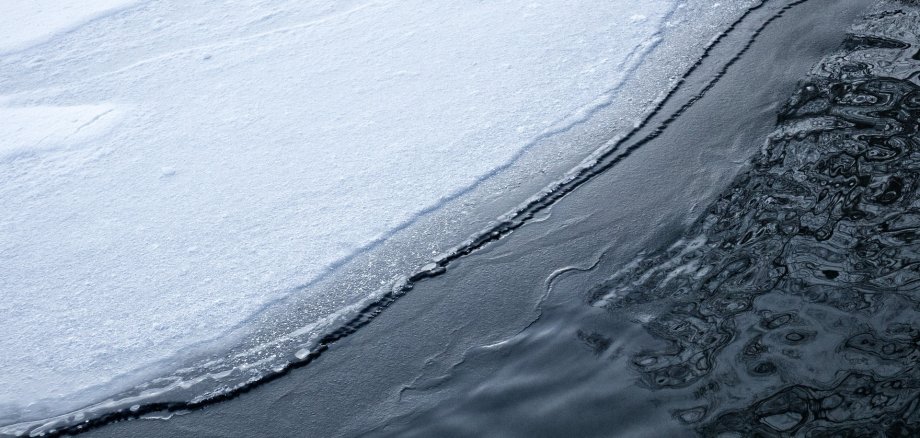Die aktuell frostigen Temperaturen machen aus unseren Seen und Gewässern Eisflächen, die zum Betreten verlocken könnten. Oft wird die Dicke der Eisschicht unterschätzt, dies kann jedoch ein lebensgefährlicher Leichtsinn sein, da die Gefahren eines Eiseinbruchs hoch sind.
Bitte bedenken Sie, dass das Eis an verschiedenen Stellen eines Gewässers recht unterschiedliche Stärken aufweisen kann und dadurch nicht sicher für ein Betreten ist. Ursachen dafür sind unter anderem:
- Ground heat
- Currents
- Tributaries of warm industrial waters
- Gas bubbles from muddy ground
- Thinly frozen fishing holes
- Break-in points
- Ice cracks
Was tun, wenn es dennoch zu einem Eiseinbruch kommt?
Die größte Gefahr für eine im Eis eingebrochene Person ist eine starke Unterkühlung und die damit verbundene Abnahme der Kräfte und des Reaktionsvermögens. Zusammen mit dem Abtrieb schwerer Winterkleidung führt dies schon in wenigen Minuten zum Ertrinken.
Daher ist neben einer schnellen Selbst- oder Fremdrettung unter anderem auch der sofortige Notruf unter der Nummer 112 lebensrettend, damit besonders geschulte und ausgestattete Rettungsspezialisten von Feuerwehr und DLRG sofort zum Einsatz kommen können.
Self-rescue:
A self-rescue from wintry waters must be carried out in the shortest possible time. Just a few minutes after the person has fallen into the water, their limbs will become so stiff from the cold that all attempts at self-rescue will fail. As direct contact with the ice-cold water causes severe pain, all mental and physical strength must be mobilised in order to avoid panic and to be able to leave the ice-cold water as quickly as possible.
Depending on the condition of the ice, there are two options:
- If the ice is reasonably stable, try to push yourself flat onto the ice and then crawl over the ice to the shore.
- If the ice is not stable enough, try to break it up piece by piece with your fists or elbows and make your way to the shore or to more stable ice.
External rescue:
- The casualty is floating in the water at the point of collapse:
The ice, which is no longer sufficiently stable, poses a considerable risk to rescuers. The person who has collapsed can only stay on the surface for a short time due to the rapid solidification of their limbs, so the utmost haste is required.
If possible, the rescue is carried out from land. The rescuer hands, pushes or throws aids such as boards, poles, ladders, wooden garden tables or benches, doors, ropes, parts of wooden fences, branches or shrubs to the casualty. If the casualty is unable to free themselves, the rescuer must come to their aid on the ice. The rescuer must never approach the collapse site standing up. Instead, the rescuer should approach the ice hole lying down, preferably with arms outstretched. It is a great advantage if the rescuer lies on a large surface (door, wide board) and pushes towards the person who has fallen in. If there are several rescuers at the accident site, the first rescuers should be secured with a line if possible.
Once the rescuer has approached the collapse site sufficiently, existing aids such as boards, ladders or similar are pushed over the collapse site to increase the load-bearing capacity of the ice and to give the collapsed person the opportunity to pull themselves out. - Rescue of people trapped under ice in standing and flowing water:
Specially trained divers are required here. Therefore, only an immediate emergency call may save lives.
Please note that an emergency call should always be made to 112 if a person has fallen into the ice. Even if the person could fortunately be rescued quickly, a medical examination is advisable. Therefore, if in doubt, always call the rescue coordination centre on the standard emergency number: 112 (also free of charge and prefix-free from a mobile phone!).

